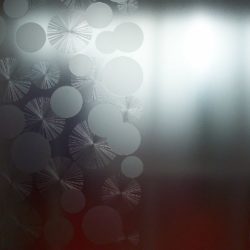Frosted Glass I Acid Etched Glass I OMC 108 I Palace of Glass
$1.00
Description
In the constantly changing realm of modern architecture, designers and architects worldwide are eagerly seeking materials that combine aesthetic appeal with functional advantages. Among these groundbreaking materials, frosted glass stands out as a prominent trend, captivating creative professionals across the globe. This versatile glass variant has become the designer’s preferred choice. It is the best matierial to achieve opacity while maintaining ample light transmittance. In this article, we will explore how frosted glass became a trend in modern architecture, its production styles, and how its different opacities empower architects to control the flow of daylight and visibility in their designs.
The Emergence of Acid-Frosted Glass in Modern Architecture
Acid-frosted glass, commonly known as frosted glass or etched glass, has a rich history dating back to ancient times. In modern architecture, it experienced a resurgence due to a combination of factors that led to its popularity.
- Aesthetics: frosted glass exudes an understated elegance, making it a favorite among architects seeking to infuse spaces with a touch of sophistication. Its soft, diffused appearance adds a layer of depth to design elements, creating a visually captivating experience.
- Versatility: The versatility of frosted glass is unparalleled. You can use it in various applications such as windows, doors, partitions, shower enclosures, and decorative elements, providing designers with limitless creative opportunities.
- Privacy and Light Control: Modern architecture often requires striking a balance between privacy and natural light. Frosted glass allows architects to design spaces with ample light while maintaining a level of seclusion, making it an ideal solution for urban environments.
Production Styles of Frosted Glass
The production of acid-frosted glass involves the controlled application of acid or abrasive materials to the glass surface. There are two primary methods for creating this effect:
- Acid Etching: In the traditional acid etching process, a layer of the glass surface is removed using hydrofluoric acid or other chemicals. The acid creates a fine, satin-like texture on the glass, diffusing light and obscuring visibility while maintaining its light-transmitting properties.
- Sandblasting: In sandblasting, abrasive materials, such as sand or aluminum oxide, are blasted onto the glass surface at high pressure. This process achieves a frosted appearance similar to acid etching, offering varying degrees of opacity and light diffusion.
Empowering Architects with Unparalleled Control
The use of acid-frosted glass with different opacities empowers architects to exert precise control over the flow of daylight and visibility in their designs. This control is essential for achieving the desired ambiance and functionality of a space:
- Varying Opacities: Acid-frosted glass can be produced with a range of opacities, from high opacity to semi-translucent. Architects can choose the level of privacy they want to achieve in a given space, whether it’s a bathroom, office, or meeting room.
- Diffusing Light: Regardless of its opacity, frosted glass uniformly diffuses incoming light, minimizing harsh glares and shadows. This controlled light diffusion creates a gentle, soothing atmosphere, enhancing the overall comfort and aesthetics of the space.
- Establishing Visual Privacy: The ability of acid-frosted glass to obscure visibility ensures the creation of private areas without compromising on natural light. This feature is particularly valuable in communal spaces, where occupants can enjoy both openness and privacy.
- High Light Transmittance: One of the most significant advantages of custom glass is that, despite its ability to provide visual privacy, it maintains high levels of visible light transmittance. This allows architects to optimize daylighting and reduce the need for artificial lighting, promoting sustainability in design.
Conclusion
Acid-frosted glass has become a prominent trend in modern architecture due to its unique combination of aesthetics, functionality, and sustainability. The controlled production styles of acid etching and sandblasting allow architects to choose from various opacities, providing unparalleled control over the flow of daylight and visibility in their designs. The ability of acid-frosted glass to diffuse light, establish visual privacy, and maintain high levels of light transmittance makes it the designer’s preferred choice for creating inviting, well-lit spaces that strike a perfect balance between openness and seclusion. As modern architecture continues to evolve, acid-frosted glass will undoubtedly remain a timeless and cherished material for creating harmonious and captivating built environments.













